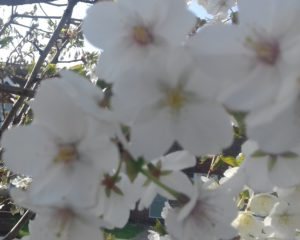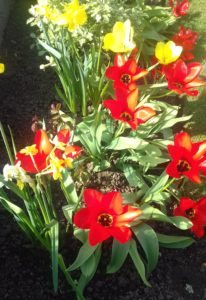The March of Spring
As is usual in March here in the Northern Hemisphere, our weather has swung from bright Spring sunshine days to howling winds and slate grey skies. But through it all we have seen the march of the spring flowers, the suddenness of buds on trees then rapidly bursting into creamy white and pink blossoms. From the near silence of our gardens in Winter, we are increasingly serenaded and encouraged by birds arriving out of the blue, chattering on rooftops, busily shouting out their activities for all to hear.






It’s all looking lovely right now, and even if we do get snow at Easter as sometimes happens, who cares, we’ll have had our Spring!
March is a time of celebration in many parts of the world and different cultures mark the undeniable signs of Spring. In Ancient Mesopotamia March was in fact the time when they celebrated the turn of the year – the New Year; in India early March is when Holi, the Hindu Festival of Colours is celebrated with people throwing coloured powders and water at each other. Here in England people make their way to Stonehenge to celebrate the Vernal (Spring) Equinox on March 20th. Other ancient, sacred sites around the world which are considered to have been solar observatories are Angkor Wat in Cambodia where the particular orientation of the rising sun at the Vernal Equinox would have been significant as marking the beginning of the sun’s annual journey; the Mnajdra temples in Malta; The Loughcrew Cairns in Ireland (St Patrick’s Day is a few days short of the Vernal Equinox); the Mayan site of Chichen Itza and many more. In ancient cultures Equinoxes and Solstices could be relied on to mark the passage of time and seasons.
